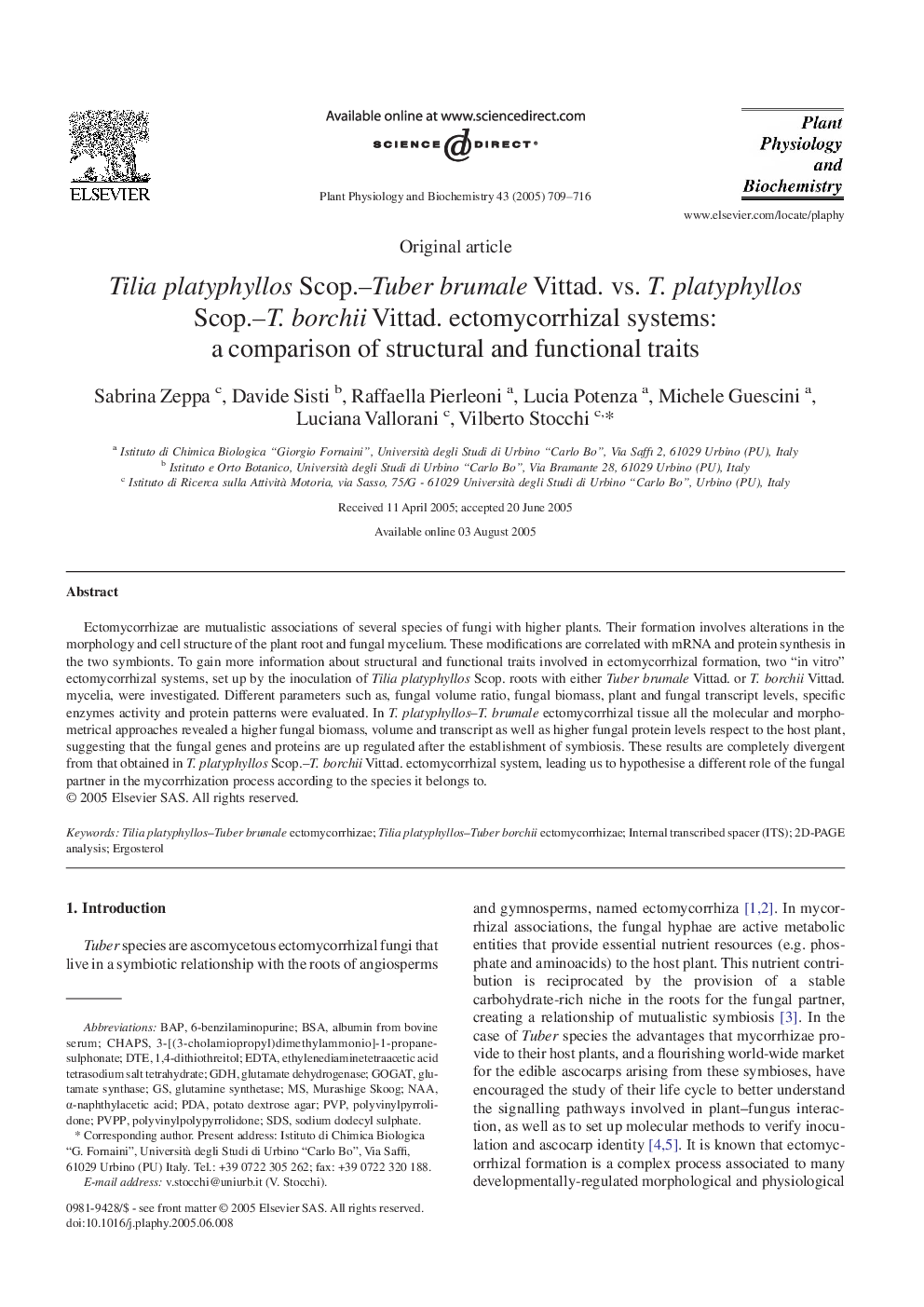| Article ID | Journal | Published Year | Pages | File Type |
|---|---|---|---|---|
| 10840439 | Plant Physiology and Biochemistry | 2005 | 8 Pages |
Abstract
Ectomycorrhizae are mutualistic associations of several species of fungi with higher plants. Their formation involves alterations in the morphology and cell structure of the plant root and fungal mycelium. These modifications are correlated with mRNA and protein synthesis in the two symbionts. To gain more information about structural and functional traits involved in ectomycorrhizal formation, two “in vitro” ectomycorrhizal systems, set up by the inoculation of Tilia platyphyllos Scop. roots with either Tuber brumale Vittad. or T. borchii Vittad. mycelia, were investigated. Different parameters such as, fungal volume ratio, fungal biomass, plant and fungal transcript levels, specific enzymes activity and protein patterns were evaluated. In T. platyphyllos-T. brumale ectomycorrhizal tissue all the molecular and morphometrical approaches revealed a higher fungal biomass, volume and transcript as well as higher fungal protein levels respect to the host plant, suggesting that the fungal genes and proteins are up regulated after the establishment of symbiosis. These results are completely divergent from that obtained in T. platyphyllos Scop.-T. borchii Vittad. ectomycorrhizal system, leading us to hypothesise a different role of the fungal partner in the mycorrhization process according to the species it belongs to.
Keywords
Related Topics
Life Sciences
Agricultural and Biological Sciences
Plant Science
Authors
Sabrina Zeppa, Davide Sisti, Raffaella Pierleoni, Lucia Potenza, Michele Guescini, Luciana Vallorani, Vilberto Stocchi,
